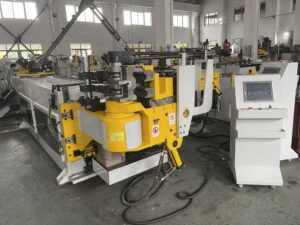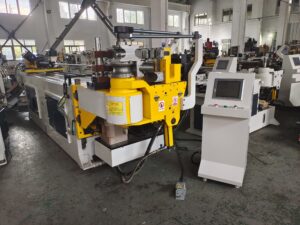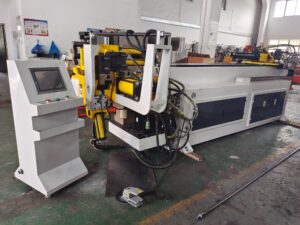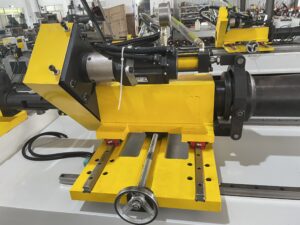How To Design Pipe Bend Radius: A Comprehensive Guide
Introduction
When it comes to piping systems, one of the most critical design considerations is the pipe bend radius. The Design Pipe Bend Radius determines the flexibility, structural integrity, and flow efficiency of a pipeline. Whether you’re working with industrial piping, HVAC systems, or hydraulic applications, understanding how to properly calculate and implement the correct bend radius is essential to avoid failures, pressure drops, and material stress.
This guide will explore the key factors influencing pipe bend radius design, industry standards, calculation methods, and best practices. Additionally, we’ll examine a real-world case study to illustrate the importance of proper bend radius selection.

1. Understanding Pipe Bend Radius and Its Importance
The Design Pipe Bend Radius refers to the minimum radius a pipe can be bent without causing deformation, weakening, or flow restrictions. A well-designed bend ensures:
- Structural Integrity – Prevents kinking, wrinkling, or collapse.
- Optimal Flow Dynamics – Reduces turbulence and pressure loss.
- Material Longevity – Avoids excessive stress that leads to fatigue cracks.
Key Factors Affecting Bend Radius
Several variables influence the pipe bend radius design:
- Pipe Material – Metals (steel, copper, aluminum) vs. plastics (PVC, HDPE) have different flexibility.
- Pipe Diameter (D) – Larger diameters require larger bend radii.
- Wall Thickness – Thicker walls allow tighter bends without deformation.
- Bending Method – Cold bending vs. hot bending impacts the minimum achievable radius.
- Application Requirements – High-pressure systems need smoother bends than low-pressure ones.
2. Industry Standards for Pipe Bend Radius
Different industries follow specific guidelines to ensure safe and efficient pipe bend radius design:
ASME B31 Codes (Process Piping & Power Piping)
- B31.1 (Power Piping) – Recommends a minimum bend radius of 3x the pipe diameter (3D) for seamless pipes.
- B31.3 (Process Piping) – Suggests 5D for welded pipes to prevent stress concentrations.
API 5L (Oil & Gas Pipelines)
- Requires a minimum bend radius of 40x the pipe diameter (40D) for high-pressure gas pipelines.
Plastic Piping (ASTM D3035, ASTM F714)
- PVC & HDPE pipes typically require 20-25x the pipe diameter to avoid buckling.
3. Calculating the Optimal Pipe Bend Radius
The general formula for determining the minimum bend radius (R) is:
R=OD×K2R = \frac{OD \times K}{2}R=2OD×K
Where:
- OD = Outer diameter of the pipe
- K = Material factor (varies by material and wall thickness)
Example Calculation
For a 4-inch steel pipe (Schedule 40, OD = 4.5″) with a K-factor of 5:
R=4.5×52=11.25 inchesR = \frac{4.5 \times 5}{2} = 11.25 \text{ inches}R=24.5×5=11.25 inches
Thus, the minimum bend radius should be at least 11.25 inches.
4. Best Practices for Pipe Bend Radius Design
To ensure a successful pipe bend radius design, follow these best practices:
- Avoid Over-Bending – Exceeding the minimum radius can cause material failure.
- Use Mandrel Bending for Precision – Mandrels support the pipe interior, preventing collapse.
- Consider Flow Dynamics – Larger radii reduce turbulence in high-velocity systems.
- Account for Thermal Expansion – Pipes in high-temperature environments may need extra bend allowance.
- Follow Manufacturer Guidelines – Always check material-specific bending recommendations.
5. Case Study: Pipe Bend Failure in a Chemical Plant
Background
A chemical processing plant experienced repeated pipe failures in a high-pressure steam line. The original design used a 2D bend radius, significantly below the ASME B31.1 recommendation of 3D.
Problem Identified
- Crack Formation – Stress concentrations at the bend led to fatigue cracks.
- Flow Disruptions – Turbulence caused uneven pressure distribution.
Solution Implemented
- Redesigned with a 4D bend radius (exceeding ASME minimum).
- Switched to mandrel bending for smoother internal surfaces.
Results
- Zero failures reported in the following 5 years.
- Improved efficiency due to reduced pressure drop.
6. Advanced Techniques in Pipe Bending
Hot Bending vs. Cold Bending
- Cold Bending – Suitable for small-radius bends in ductile materials.
- Hot Bending – Used for thick-walled or high-strength pipes to prevent cracking.
CNC Pipe Bending Machines
Modern CNC benders allow precise control over bend angles and radii, ensuring repeatability in mass production.
Finally
Designing the correct pipe bend radius is crucial for system reliability, efficiency, and safety. By understanding material properties, industry standards, and calculation methods, engineers can optimize piping layouts while avoiding costly failures.
Always adhere to ASME, API, and ASTM guidelines, and consider real-world case studies to refine your pipe bend radius design approach.



